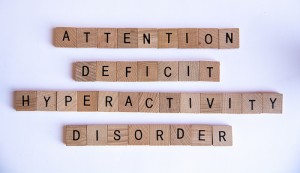What is the Difference Between ADD and ADHD?
- Children with ADD/ADHD have a deficiency of dopamine in the prefrontal cortex.
- In ADHD the brain overstimulates other parts of the brain due to this deficiency.
- In ADD the brain gives up on trying to fix the dopamine deficiency.
- (Heriot, 2007)
Ways to Treat ADD and ADHD
- Adderall has been found to have a longer lasting effect on children, yet some children respond better to Ritalin and individual differences should be taken into consideration.
- Children that are taking medications for ADD/ADHD should be closely monitored by clinicians, parents, and teachers.
- Research has also shown that parents who get training on this disorder are able to parent their children with this disorder more effectively.
- (Zametkin, 1998)
- Unfortunately media varies and there are myths that do not support recent findings, on treatment of ADD and ADHD.

Research on Adderall and Ritalin’s Effectiveness
Pelham, Gnagy, Chronis, Burrows-MacLean, Fabiano, Onyango, Steiner, (1999), compared the effect of the standard dose of Ritalin twice a day, to the standard dose of Adderall during a child’s typical school day time period. They also compared differences in drug effects in the late afternoon and evening. Researchers evaluated these differences with a within-in subject placebo controlled cross over design. For three months in the summer children experienced classes five days a week that consisted of seat work, peer tutoring and computers.
At the beginning of class each child received the same amount of points, but if they violated the teacher’s rules and were uncooperative, they kept losing points. Children were observed in all of the different activities by researchers, and the teachers presented children with daily report cards. Children randomly received: 0.3 mg/kg of Ritalin three times a day, an inactive placebo, 0.3 mg/kg twice a day with 0 .15 mg/kg at 3:30 pm, 0.3 mg/kg in the morning only, 0.3 mg/kg of Adderall at 7:30 am and 3:30 pm, 0.3 mg/kg of Adderall in the morning and 0.15 mg/kg in the afternoon, or 0.3 mg/kg of Adderall once in the morning. Daily rates of each child’s behavior in social and academic settings was measured, hourly effects of the drug during the school day, and standardized test ratings were given to teachers and parents.
The at home behavioral effects of the child was just measured by the parents. Results showed that single dose of Adderall produced similar behavioral effects to two doses of Ritalin, although Adderall lasted more throughout the day. One dose of Ritalin was not as effective as two doses of Ritalin, or one dose of Adderall. For some children Ritalin did last throughout the day. This study supports that children with ADHD can use Adderall as a more convenient long-term acting stimulant.

By: Practical Cures
Myth Myth One:
This video clip shares supplements that have helped this person with ADD and ADHD, even though research has not supported that any of these supplements have been effective. Both Ritalin and Adderall with close monitoring from a doctor, have proven to be effective. Some children respond to Ritalin over Adderall and vice versa, and each child responds to different doses.
How Adderall and Adderall XR Are Used
Mcgough, Biederman, Wigal, Lopez, Mccracken, Spencer, Zhang, et al., (2005), discovered the effectivity of and adderall XR. Adderall and Adderall XR differ in that they are different forms derived from mixed amphetamine salts. Adderall immediately releases its therapeutic effects over the course of the three hours. Adderall XR is an extended release form of adderall. It releases effects one hour after administered, yet the rest of the dose is released slowly over the course of six to seven hours. The point of this study was to evaluate the effects of adderall and adderall XR in children with attention-deficit/hyperactivity disorder (ADHD), which was explored through two double blind randomized studies. Researchers made sure that children met DSM-IV criteria and that there were no co-existing disorders.
The first study consisted of fifty one participants which were administered 10 mg, 20 mg, or 30 mgm of adderall XR, an inactive placebo, or an active placebo of 10 mg of adderall daily. The second study lasted consisted of five hundred eighty four participants that were administered a placebo or 10 mg, 20 mg, or 30 mg of adderall XR daily. The studies lasted a total of two years that evaluated children between the ages of six and twelve years old. Participants were evaluated in their homes, at school, and were assessed both in the morning and afternoons. Measurements were assessed by the the Conners Global Index Scale, which is a scale that assess ADHD symptoms and treatment over time. The scale was administered at each clinic visit and by parents whenever they had the opportunity. Clinic visits lasted every week at the beginning of the treatment for four weeks, and after visits were reduced to monthly. Results showed that varied doses of adderall XR showed most effective treatment.
A small amount of participants experienced adverse effects such as insomnia, headache, and anorexia. There was a positive correlation between increased amount of adderall XR and number of adverse effects. Findings of this study that 10 mg-30 mg of adderall XR is more effective than adderall, yet the dose varies from child to child. Other researchers should also be aware of the fact of the increased adverse effects as dosage increases, and the effects of Adderall XR might differ with those who only have attention deficit disorder (ADD).
Media Myth Two:
Some media do not support the research findings. This media says that any form of Adderall does not work, and that there’s only one natural way to treat this disorder. Different dosing of Adderall and Adderall XR impact ADHD and ADD in different ways and should be monitored since each child is different. Adderall XR is more appropriate for ADHD while Adderall is more geared towards children with ADD.

By: OakleyOriginals
Barkely, Dupaul, and McMurray (1991), explored the effect of different doses of methylphenidate (Ritalin) on children with ADD, and ADHD. Previous studies have explored the effect of stimulants on children with ADD and ADHD separately, but no studies before this one compared to children that have attention deficit disorder with and without hyperactivity. Twenty three children with attention deficit disorder with hyperactivity (ADD+H), and seventeen children with attention deficit disorder without hyperactivity disorder (ADD-H), participated in the study. Children were between the ages of six and eleven and were recruited from the University of Massachusetts’s medical center.
Children were evaluated for other impairments by physician and psychologist, and parents were interviewed as well. A baseline of the each child’s behavior was gathered from a research assistant for 3.5 hours, while the parents were interviewed. The children were randomly assigned to treatments of 5 mg, 10 mg, and 15 mg of methylphenidate, as well as a placebo group that they were instructed to take twice a day. Treatments were measured by parent and teacher ratings, laboratory tests of ADD symptoms and behavioral observations of the children’s academic performance, were gathered after one week of treatment. For example the Wisconsin Selective Reminding test which tests verbal learning and memory, was given to each child. Twelve unrelated words were verbally presented to the children, and they were asked to repeat the words back. The missed words were only repeated back to the child, and then they were asked to repeat the entire list again. This same procedure went on for ten trials or until the child recalled the list correctly.
After one week of one treatment the children were randomly assigned to one week of a different treatment, and the same evaluations gathered behavior differences in the child at the end of the week. Results showed a significant difference in children’s clinical responses to the various doses to methylphenidate. It showed that children with ADD-H showed more improved results with low doses of methylphenidate, while children with ADD+H showed a better response to higher doses of methylphenidate.
This study showed that children with ADD-H might have a different attention impairment, than children with ADD+H. Children with ADD-H showed an impairment in focused and selective attention, while children with ADD+H showed impairments if vigilance, maintenance effort, and behavioral disinhibition. Further studies need to explore the differences between ADD-H and ADD+H, because these two disorders may need to be treated very differently from each other.
Media Myth Three: https://m.youtube.com/watch?v=7PBsvmhIRYU
This media clip does not support my research and says that Ritalin is ineffective and harmful, for children being treated with ADD and ADHD. Different dosages of Ritalin can be effective, and every child will respond differently to each dose.
In Summary
These sources along with my media findings show the efficacy of both Ritalin and Adderall. It should also be noted that severity of ADD/ADHD symptoms vary from individual to individual, and that all children have various medical histories. No child is the same, and there should not be one standard treatment for ADD/ADHD. It’s important for clinicians and parents, to keep an open mind about the various treatments from individual to individual.
References
Barkely, A. J., Dupaul, J. G., McMurray, B. M., (1991). Attention deficit disorder with and without hyperactivity: clinical response to three dose levels of methylphenidate. Pediatrics, 87(4), 519-531.
Heriot, A. S., (2007). Critical influences affecting response to various treatments in young children with ADHD: a case series. Child: Care, health and development, 34(1), 121–133. doi:10.1111/j.1365-2214.2007.00745.x
Mcgough, J. J., Biederman, J., Wigal, B. S., Lopez, A. F., Mccracken, T. J., Spencer, T., Zhang, T., Tulloch, S. K., (2005). Long-term tolerability and effectiveness of once-daily mixed amphetamine salts (Adderall XR) in children with ADHD. Journal of the American Academy of Child and Adolescent Psychiatry, 44(6), 530–538. doi:10.1097/01.chi.0000157550.94702.a2.
Pelham, W., Gnagy, E., Chronis, A., Burrows-MacLean, L., Fabiano, G., Onyango, A., & … Steiner, R. (1999). A comparison of morning-only and morning/late afternoon Adderall to morning-only, twice-daily, and three times-daily methylphenidate in children with attention-deficit/hyperactivity disorder. Pediatrics, 104(6), 1300-1311.
Zametkin, A. J., Liotta, W., (1998). The neurobiology of attention-deficit/hyperactivity disorder. Journal of Clinical Psychiatry, 59(7), 17-23.


